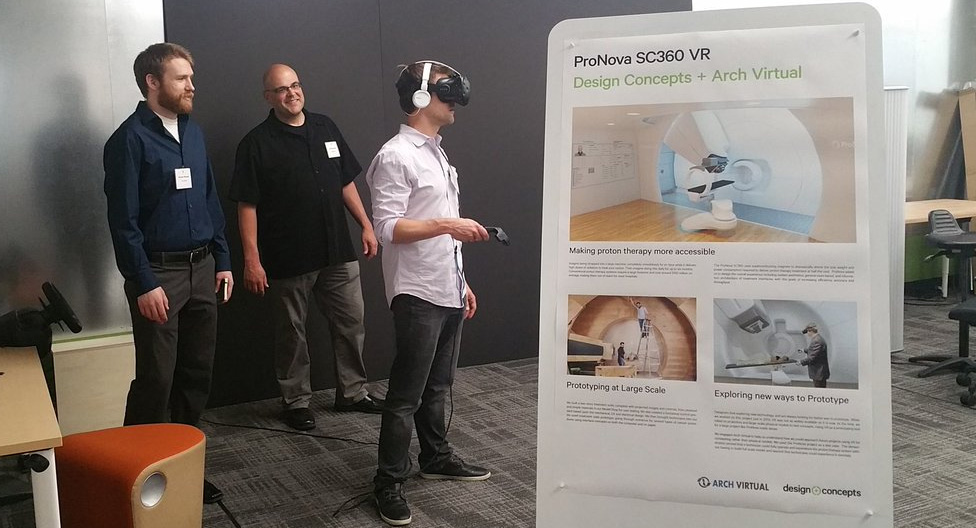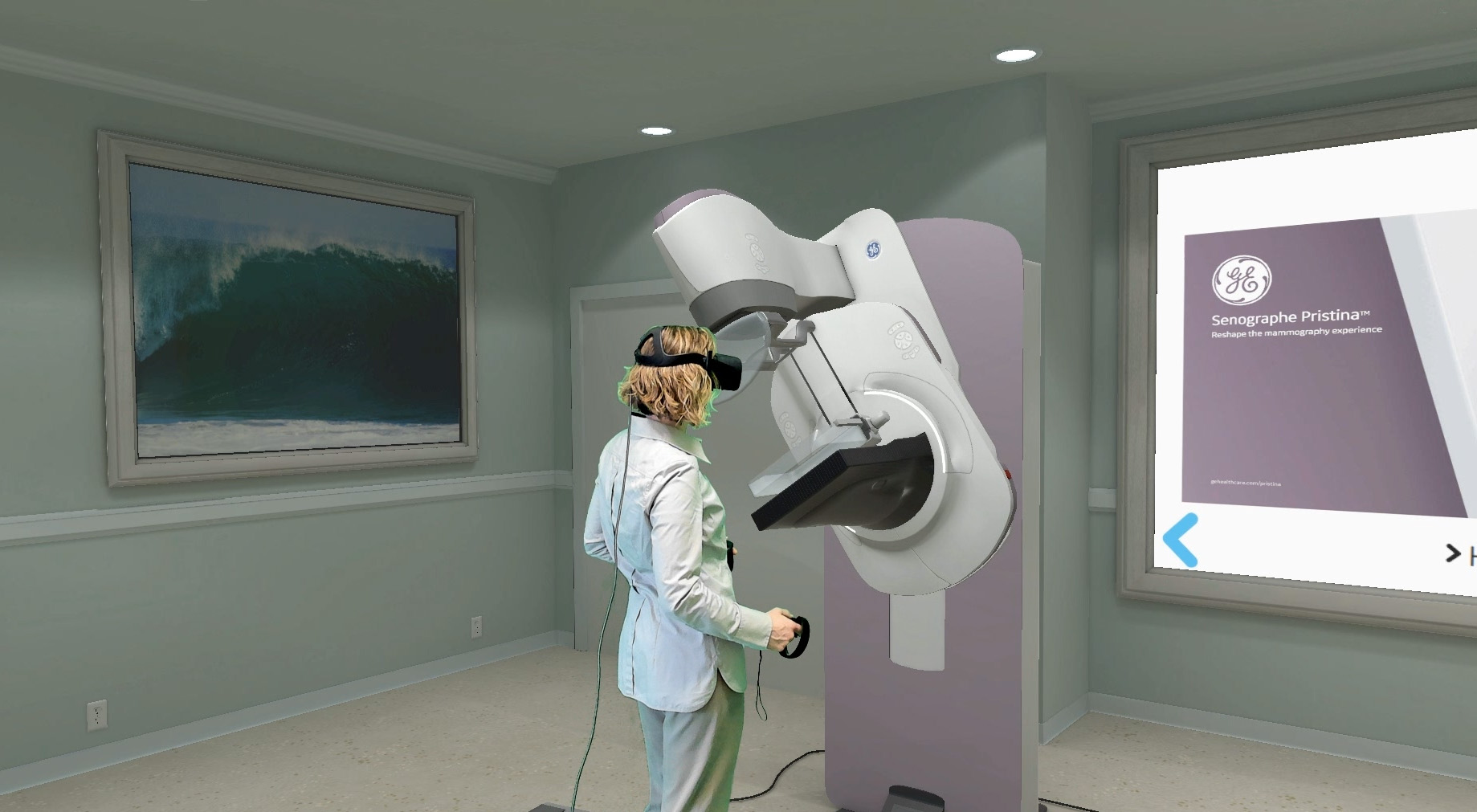The intersection of healthcare simulation and VR is an exciting place to be. We’ve been focused since day one on the praxis of VR and how it can be used to solve real world problems, and are now asking:
How can VR add measurable value to healthcare simulation?
We’re witnessing a massive wave of VR innovation in the last few years. Not only are headsets are getting more comfortable and higher resolution, but the software used to create VR is getting easier to use and capable of higher visual quality and performance than ever.
We’ve had the opportunity to introduce thousands of people to VR, were honored to win Best in Show at IMSH 2018, and gathered a lot of great feedback we’re using to improve our capabilities and platform. We continue to be inspired and encouraged by the overwhelmingly positive reaction we’ve seen to VR medical training.
You can now download our free Acadicus VR training platform at http://www.acadicus.com to begin creating your own virtual reality medical education experiences.
Our goal is to create VR solutions that will help train the next generation of healthcare professionals.
We’re building on the following 7 characteristics of VR that we believe offer innovative, game-changing potential in the healthcare industries.
1. Expanded Access
Not everyone has access to state-of-the-art simulation labs, mannequins, or qualified trainers who know how to utilize these technologies. VR can greatly augment, support and extend the reach of current simulation content within and beyond the lab, enabling learners to spend as much time as they need to in a virtual simulation, or where sim labs and mannequins aren’t available.
2. Time and Money Savings
VR enables access to the virtual equivalent of millions of dollars worth of equipment and environments, in a setting where learners have unlimited access to rehearse scenarios virtually, multiple times. This helps them make efficient and effective use of their time in traditional simulation labs, saving the increasingly scarce and highly valuable time of instructors and sim technicians.
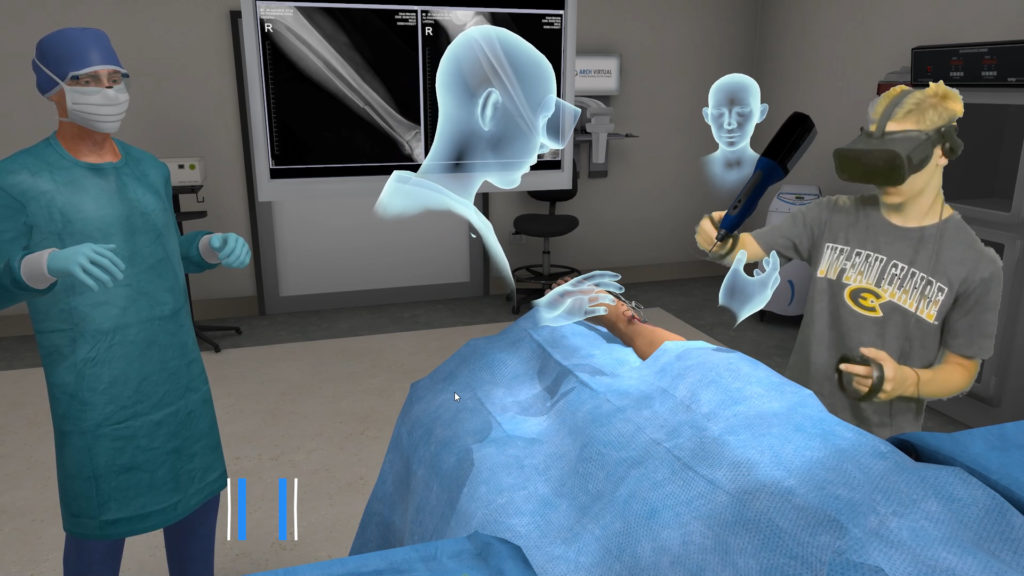
3. Remote and Collaborative Learning
If you haven’t tried multi-player VR, I sincerely hope you have the opportunity to do so in the near future. It’s a force-multiplier to a solo virtual experience that opens the door to powerful new opportunities in healthcare education and simulation.
To stand face-to-face virtually with someone physically located in a different part of the world is a mind boggling experience. This is one of the many reasons we’ve invested so much and so early in our multi-player platform. Learners can work together on a lesson collaboratively, or take direction from a remote expert who can give them the latest and greatest insights on any given procedure. The possibilities are endless.

Sign Up for our Newsletter to Learn More:
4. Focus
One lasting impression I took away from an afternoon of remote multi-user demos to the American College of Cardiology last year was the comment of one cardiologist, who said he was most intrigued with VR’s potential capacity to train focus — something that’s very difficult to teach in the real world, but comes with experience.
When it’s time to perform a procedure, you might have a long list of real-world distractions in mind, but it’s vitally important to leave all of that behind and bring laser sharp focus to the task at hand. VR could be a powerful tool to help learners retain that kind of focus in the midst of chaos and tremendous responsibility that comes with caring for a patient.
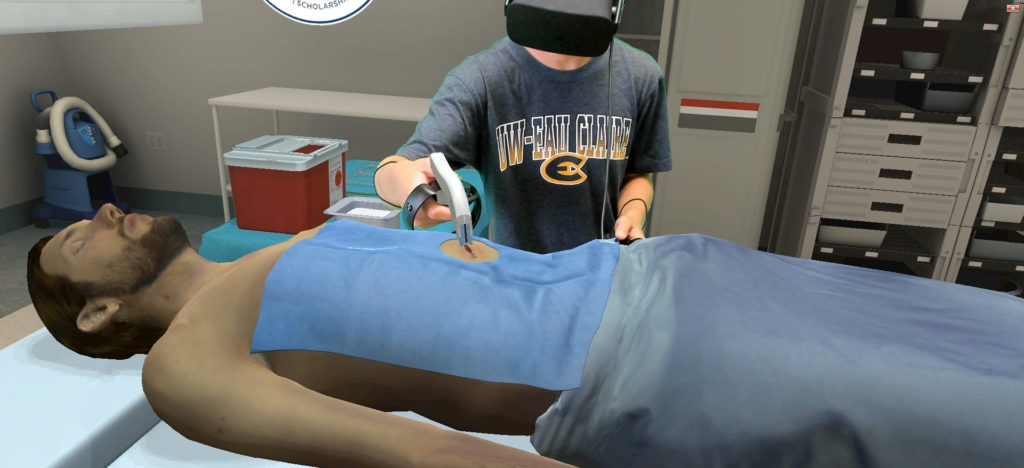
5. Fun
With VR, we have the opportunity to not only make the learning experience very realistic and immersive — we can also make it fun. Plenty of research indicates increased retention when learners are more engaged with and enjoying the content. VR can be something learners look forward to.

6. Immersion
In VR, we can evoke a very strong sense of being ‘there’ — in an operating room, clinic, or on the scene of an emergency. We have the opportunity to take the learning experience to a whole new level by instilling a sense of urgency that correspond with real world healthcare scenarios that can be very difficult, expensive or even impossible to do in the real world. I believe this will prove to yield a much higher retention rate, and help train learners on the nuances of place, context and responsibility as they absorb virtual training materials.
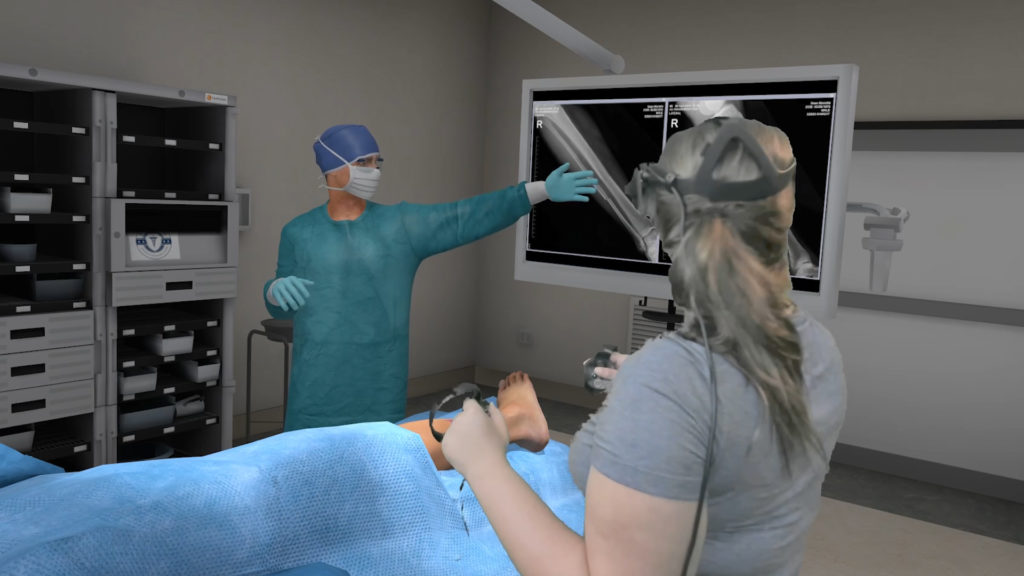
7. Retention
Research indicates greater learning retention from VR-based training over traditional methods [link]. More research is underway to gain a better understanding of this potential, but early adopters are already witnessing the obvious and increased efficacy of learning in VR. The training experience provides a new level of realism that is engaging, impactful, and perhaps most importantly – memorable.
This list only scratches the surface of the possibilities we see on the horizon, and will be sharing additional insights as we continue exploring this exciting intersection of VR and healthcare simulation.
3 Ways to Learn More:
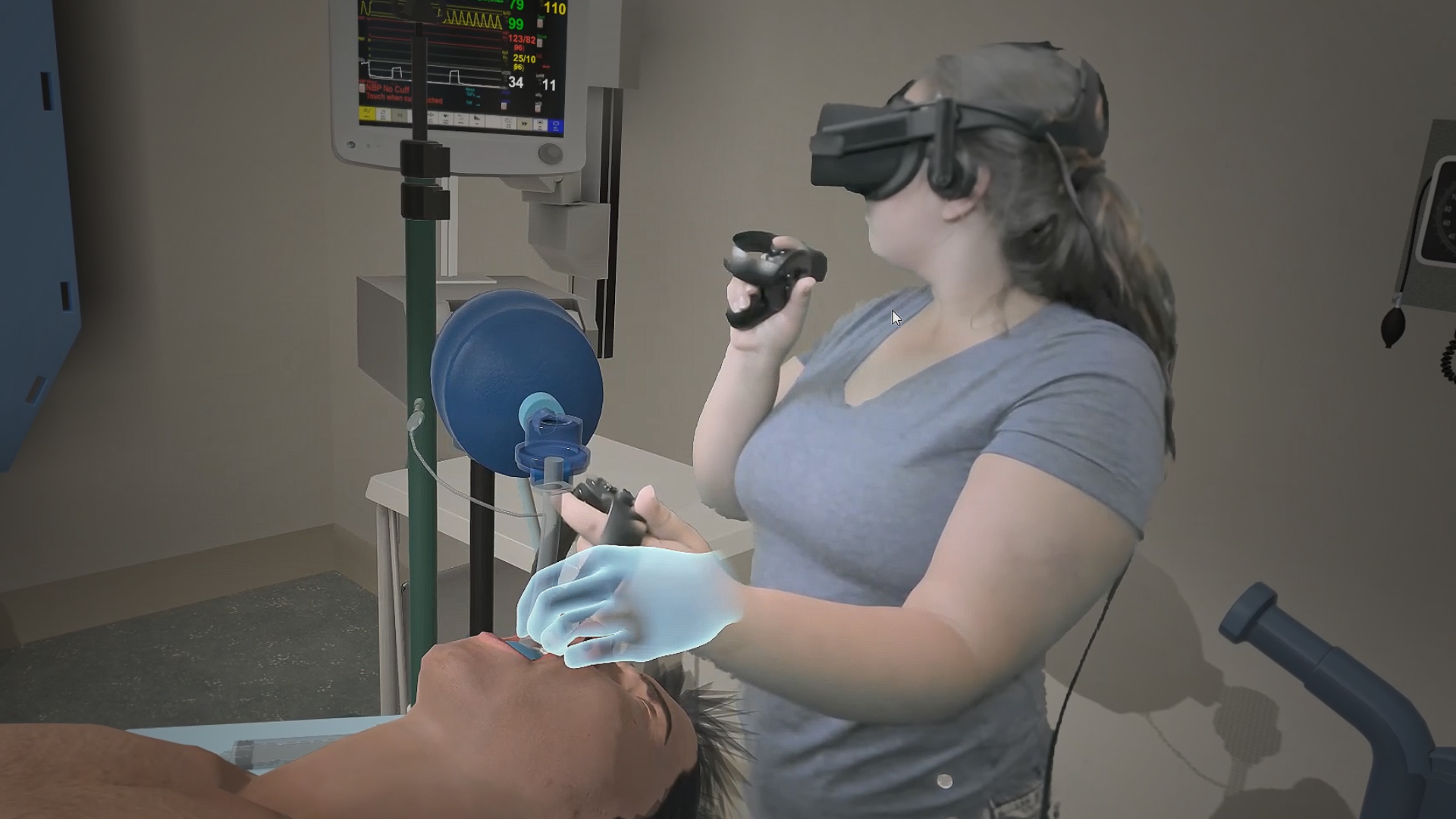
1.) Sign Up to Test Our Upcoming VR Training Platform
We’re currently inviting beta testers to try our new VR healthcare simulation platform, which is currently in development. If you’re interested, contact us via our [Contact] page.

3.) Tell Us About Your VR Idea or Project:
Arch Virtual develops custom VR medical applications and products. If you’re interested in joining us or following along to stay informed on the latest news from the VR frontier, send us a note or sign up for our newsletter below.
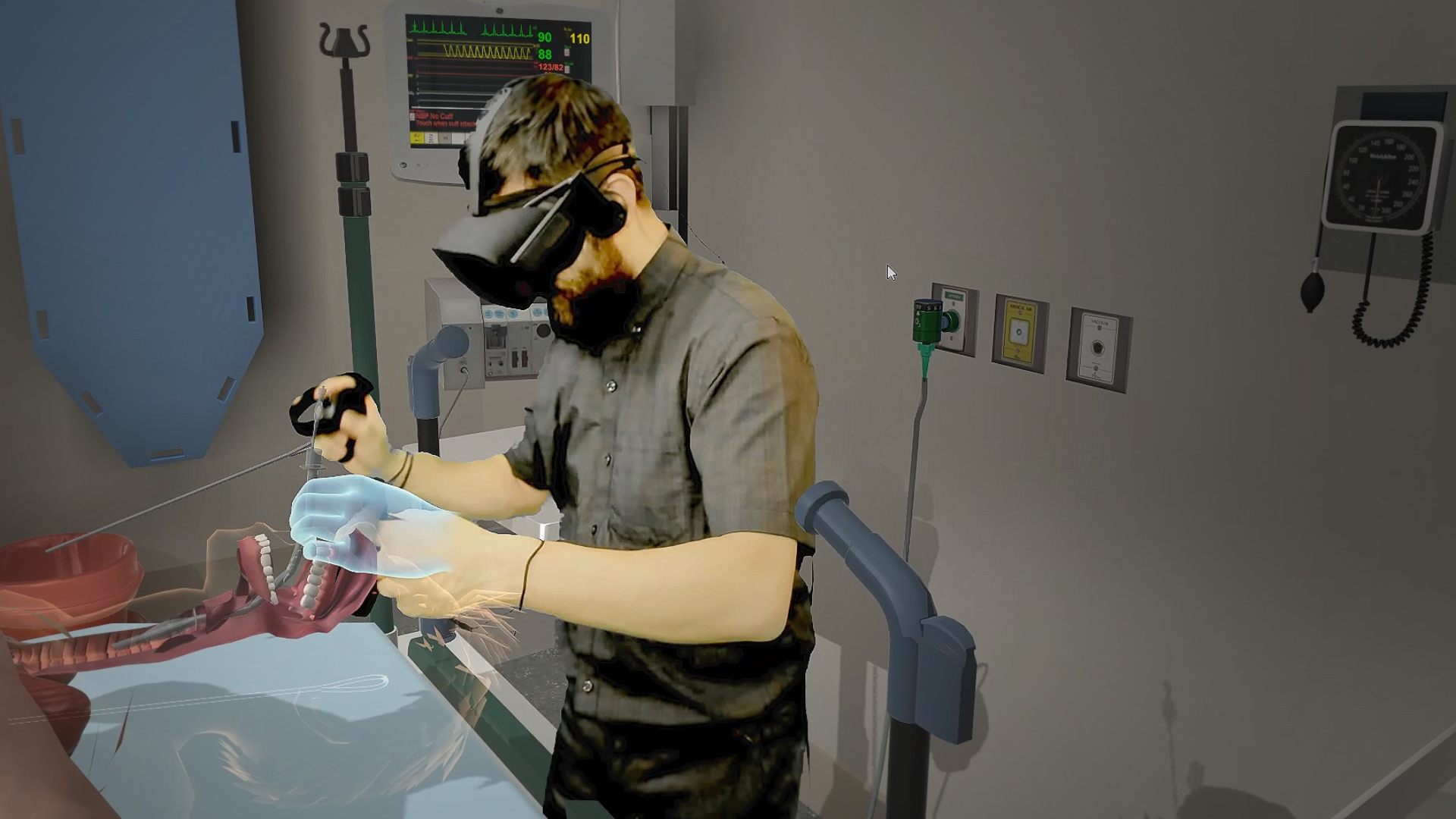
2.) Sign Up for our Newsletter:


